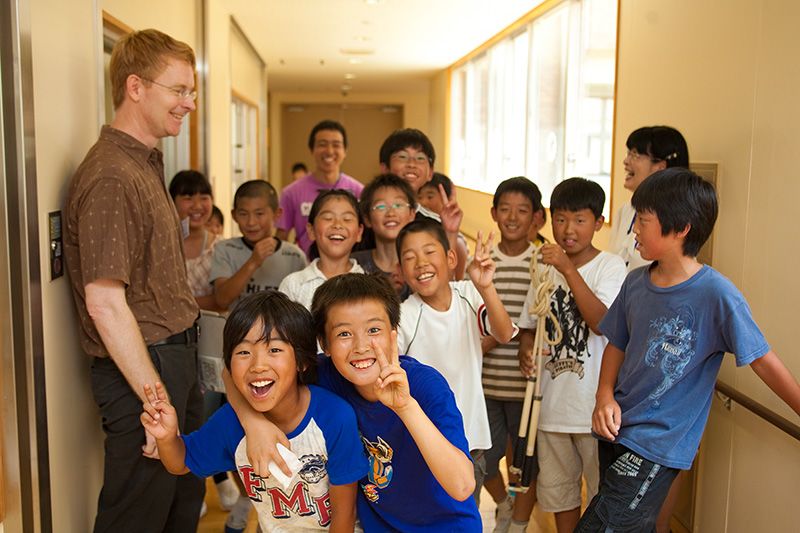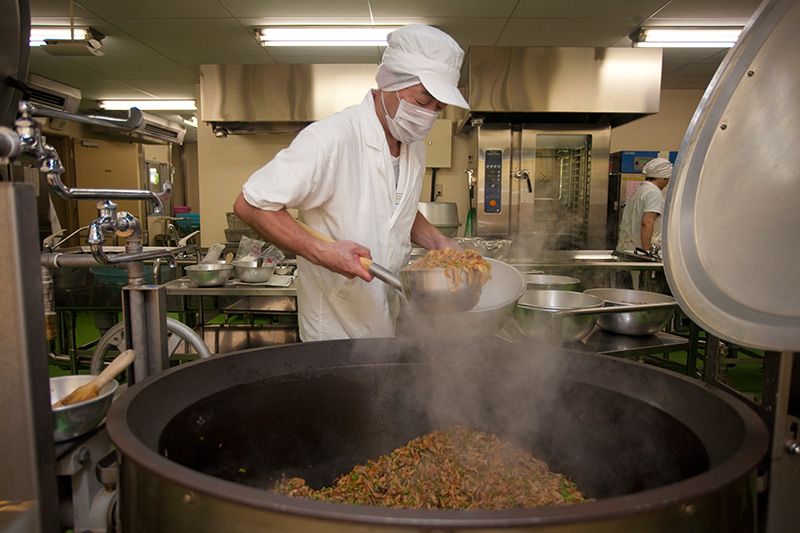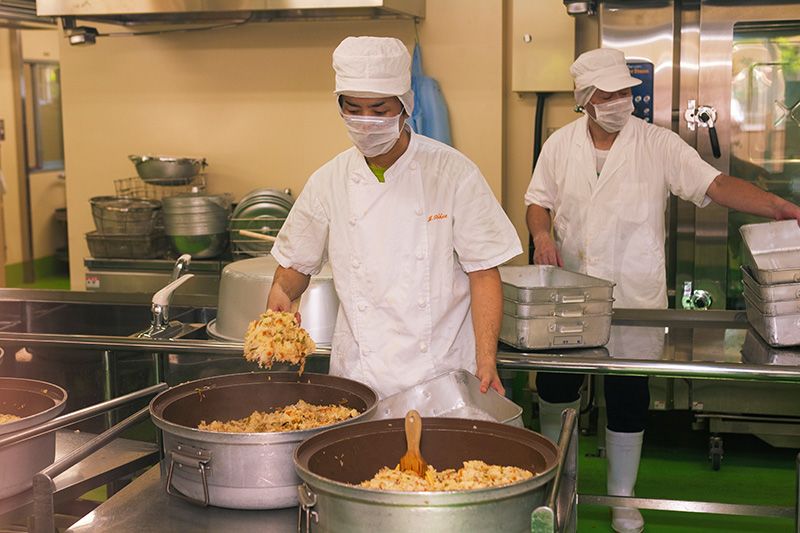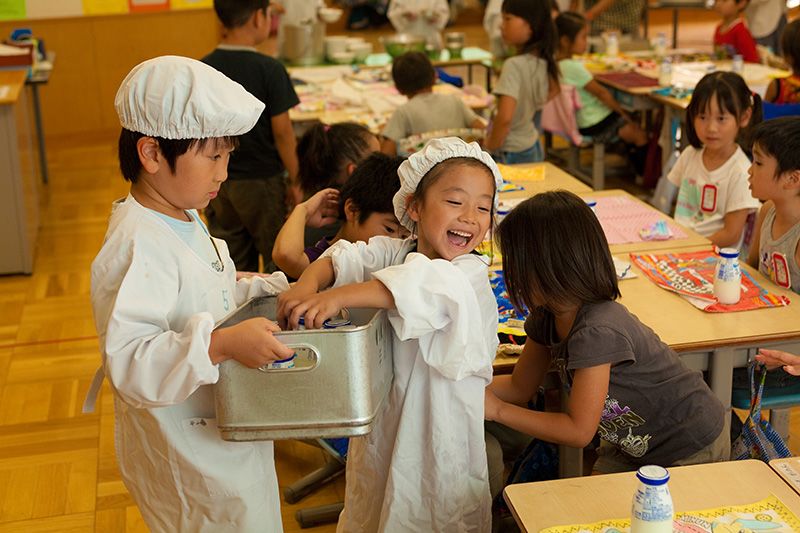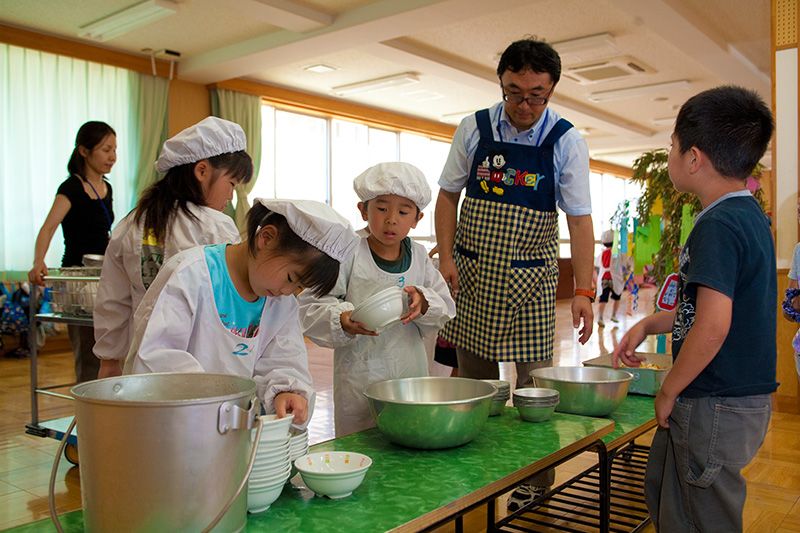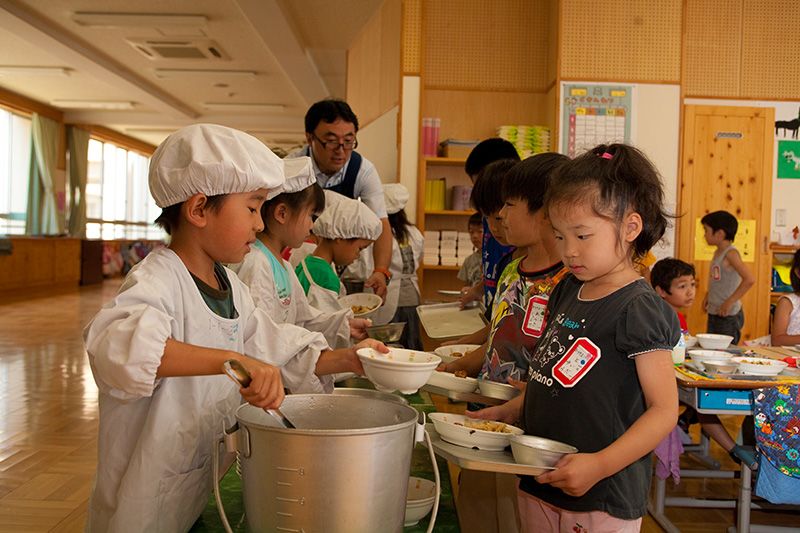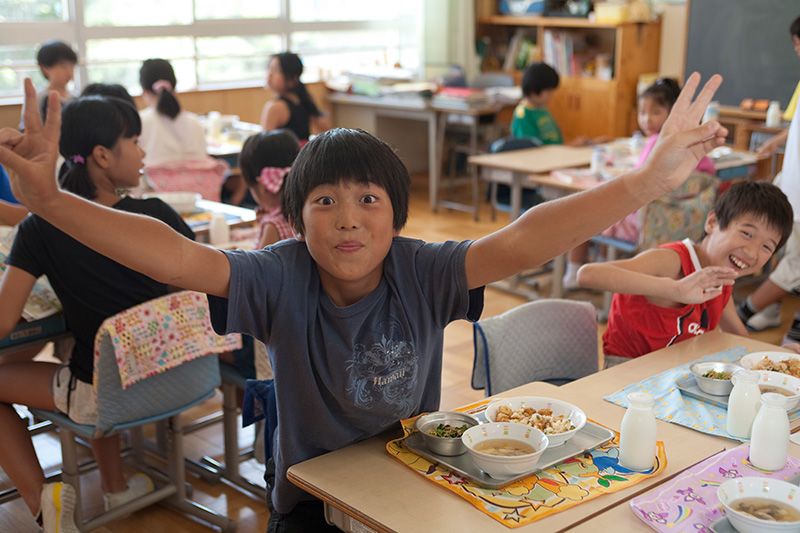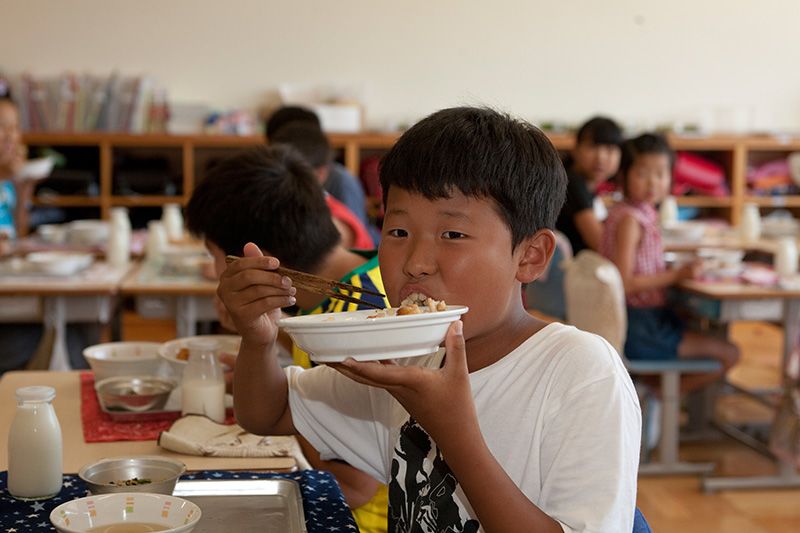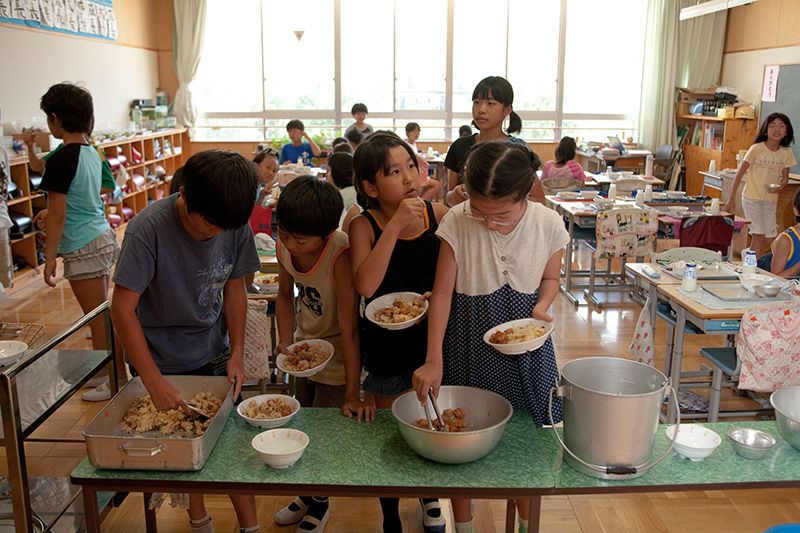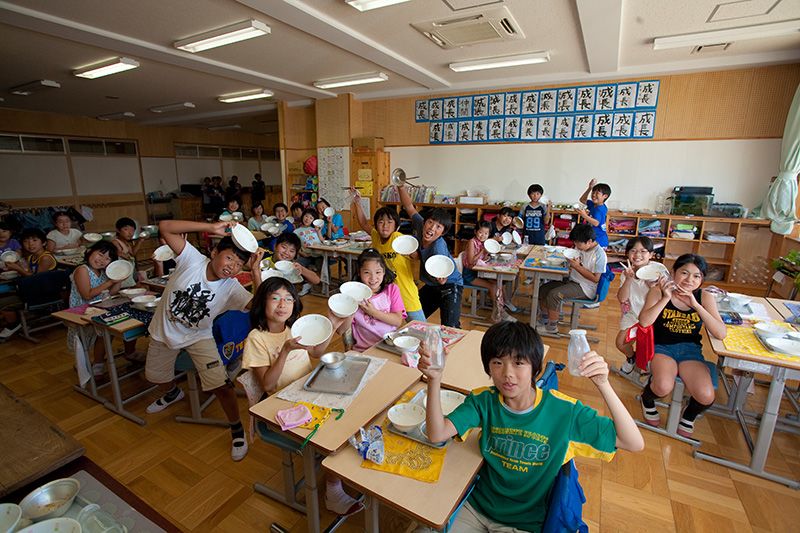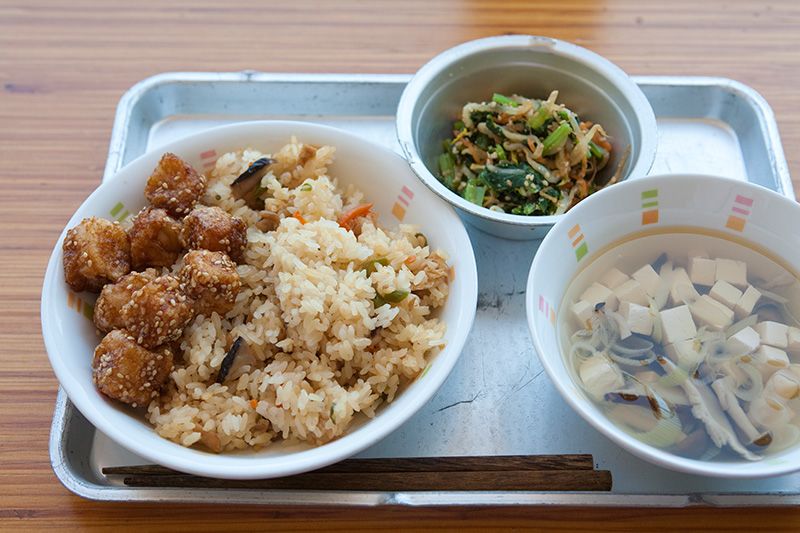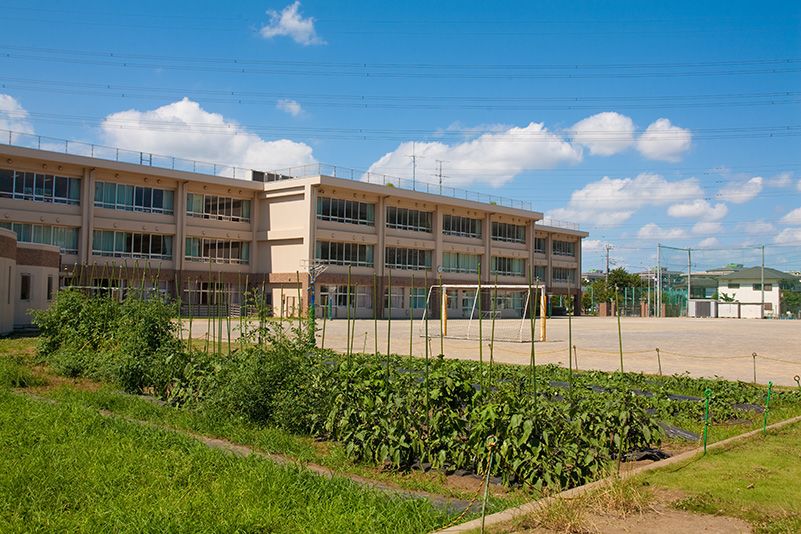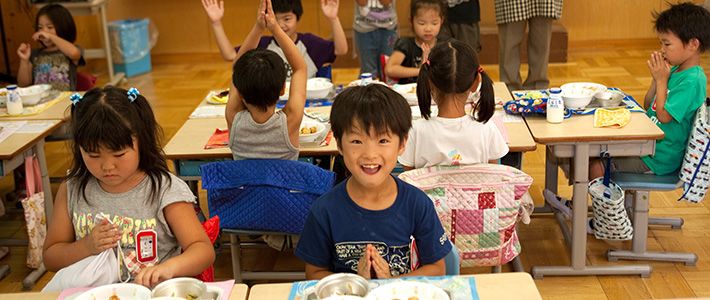
"Bentō": A Feast for the Eyes and Stomach
Power Lunch at Japanese Schools
Society Lifestyle- English
- 日本語
- 简体字
- 繁體字
- Français
- Español
- العربية
- Русский
When I was growing up in the United States, my school lunch was a pretty simple and repetitive affair—revolving around French fries sharing a plate with some sort of meat between a bun. It tasted good enough to me at the time, but the “vegetable” I recall encountering most often (apart from potatoes) was tomato ketchup.
Over a decade ago, when I came to Japan to teach English at a junior high school in Nagano Prefecture, I encountered school lunches that were far more diverse and nutritional than the ones I had as a kid. For three years in Nagano I ate school lunch every day with my students, and this served as my introduction to Japanese food culture.
Now that my eldest daughter is an elementary school student, it is reassuring to know that she can enjoy a healthy lunch every day. When I get home from work I sometimes ask her what she had for lunch, which had never been a conversation starter at home when I was her age. My daughter’s description of lunch, with its surprising array of dishes, sometimes sounds like the fare at an upscale restaurant. The dishes are listed on a printout she receives from the head nutritionist at her school, along with all sorts of useful information on food and healthy eating habits.
Talking to my daughter, and thinking back on my experience in Nagano, raised my curiosity about what goes into creating school lunches in Japan. In particular, I wondered what the job of head nutritionist entails, exactly.
To find out more, I traveled to the western Tokyo suburb of Hino with some colleagues to visit Hirayama Elementary School, which has won recognition for its outstanding school lunch program.
A Flexible System
Although just a 40-minute train ride from Shinjuku, the city of Hino where Hirayama Elementary School is located is interspersed with vegetable fields and is not far from the Tama mountain range which borders the western edge of Tokyo.
After entering the school’s sparkling new facility we are greeted by Principal Igarashi Toshiko, who informs us during our chat that the school’s history stretches all the way back to the early Meiji Era (1868–1912). She then leads us to an area outside the school’s kitchen, where lunch preparations have been underway since around eight in the morning.
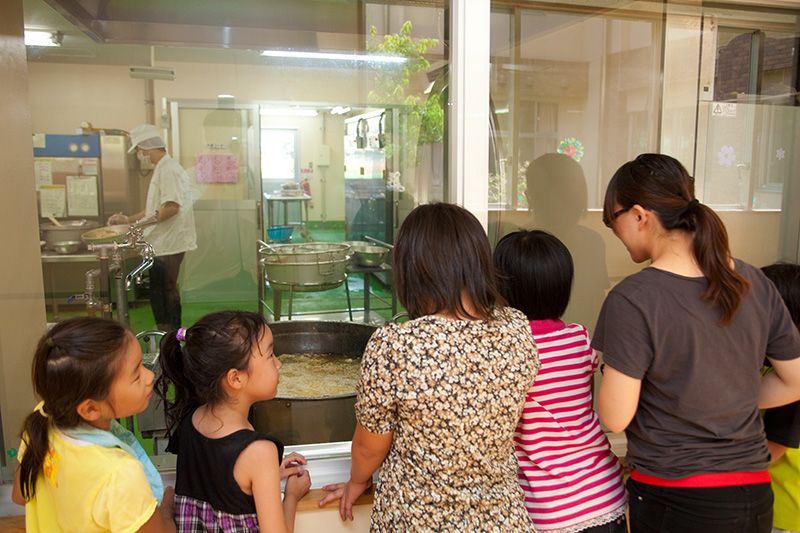
Students get a sneak peek at what’s on today’s menu by looking in on the kitchen preparations.
A glass partition separates the kitchen from the hallway outside, allowing students passing by to get a sneak peek of the day’s lunch and see for themselves how everything is being made. Today’s lunch features a vegetable and rice dish (gomoku gohan), fried tuna seasoned with a sweet and spicy sauce, a clear soup (sumashijiru), and a side dish of the leafy vegetable komatsuna served with a sesame dressing (goma-ae)—along the small bottle of milk that accompanies each school lunch. The menu is a good example of how schools try to familiarize students with as many traditional Japanese dishes as possible.
The head nutritionist, Kawaguchi Yoshie, has a moment to chat with us now that the early-morning task of chopping and preparing the ingredients has been completed. Later we are joined by four men who work with her in the kitchen to make school lunch. Every day they are all kept quite busy, preparing lunch for over 500 people, and then cleaning up afterwards and discussing the next day’s meal.
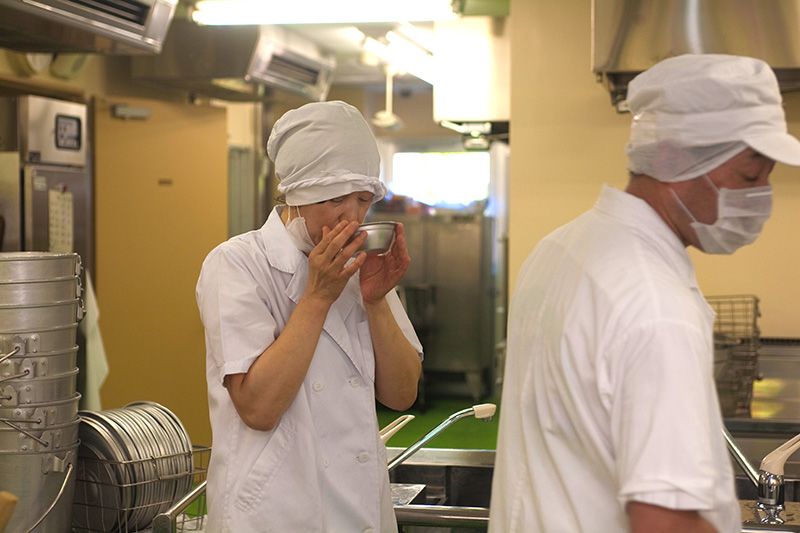
Kawaguchi Yoshie, the head nutritionist, makes sure the flavor of the soup is just right.
The first thing I ask Kawaguchi is what sort of regulations or requirements she has to follow when creating school lunches. She tells me that the Board of Education sets a general benchmark of 650 calories for each meal, and that the city of Hino sets a per-meal cost target of ¥282. Her task is to then come up with menu items that not only meet the targets but are also nutritionally well-balanced and satisfy students’ taste buds.
The calorie and protein content for each day’s lunch is listed on a printout out of the two-week menu students receive, along with pointers on healthy eating habits and other tips. And Kawaguchi has to issue a report to the Board of Education providing details on the lunches prepared.
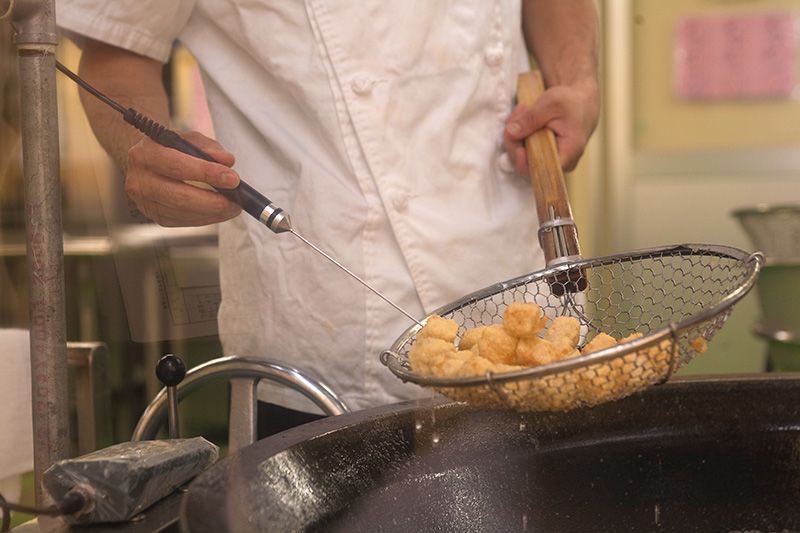
The temperature of the fried tuna is carefully checked to ensure it is properly cooked.
Strict regulations are also in place for sanitation, as I could see from the kitchen staff’s masks and clothing, and from the fact that no one else is allowed to enter the kitchen. In addition, periodic inspections are made of each school’s kitchen facilities to verify that sanitation standards are being met, and all vegetables must be cooked to prevent outbreaks of E. coli bacteria.
What impresses me most, listening to Kawaguchi’s explanation of the school-lunch system, is that schools have a considerable degree of leeway when it comes to creating lunches as long as they meet the strict nutrition and sanitation requirements. This freedom to make choices extends to the procurement of ingredients. Hirayama Elementary School, for instance, has decided to obtain 25% of all vegetables from local farmers, as a way of ensuring freshness and strengthening ties between the school and the local community.
Elementary school students, of course, can be finicky when it comes to certain vegetables. Kawaguchi says that carrots and green peppers, in particular, tend to be unpopular. One strategy she adopts is to finely chop such vegetables so they can be slipped in under the radar, so to speak. This approach succeeded marvelously in the case of a dish called “rainbow pilaf,” which was popular among Hirayama students despite containing both carrots and green peppers.
The hands-down favorite dish among the students, according to the kitchen staff, is Japanese curry with rice. But the flavor varies quite a bit, they tell me, depending on who happens to be in charge of making it on a particular day. Each of the four men working in the kitchen has his own unique way of preparing this dish; and the ingredients used vary depending on what vegetables are in season.
These sorts of creative, homemade touches really set Japanese school lunches apart from a bland, mass-production approach.
Lunchtime Learning
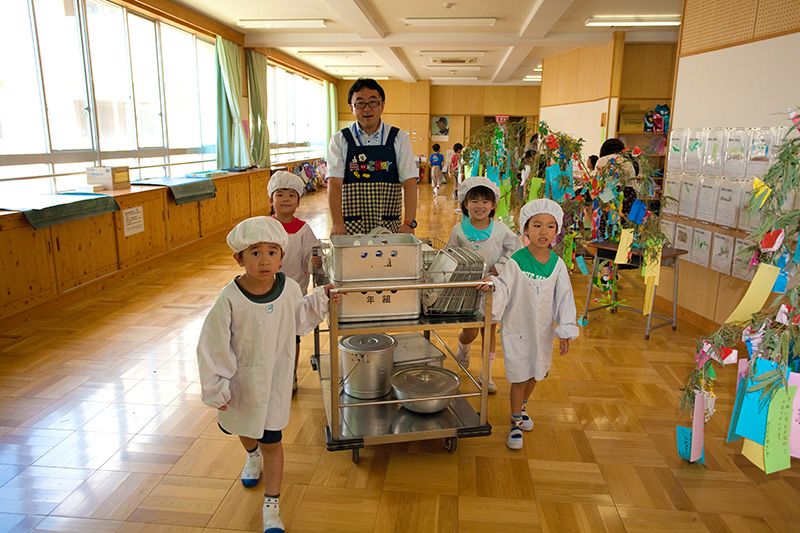
Students in Takagi Kenji’s first-grade class transport lunch from the kitchen to their classroom.
Kawaguchi and her coworkers emphasize how school lunch in Japan is about more than just providing students with a healthy meal every day. School lunch programs are also an integral part of nurturing healthy eating habits among students and preserving some of the outstanding aspects of Japanese culinary culture.
The need to encourage children to eat well-balanced meals is more important than ever in Japan now that fast-food restaurants and convenience stores have popped up in so many places. The fact that Japan has yet to be hit hard by the childhood obesity epidemic that is sweeping many other economically developed nations may be thanks, in no small part, to the healthy school lunches, which account for nearly one third of students’ meals.
Another effort underway at Hirayama Elementary School is to include many rice-centered Japanese meals on the menu. Not only do such lunches tend to be healthy, but serving them helps to preserve a valuable part of Japan’s food culture. For earlier generations, such dishes would have been served regularly at home, but for many students these days school has become the primary place to encounter traditional cuisine.
Talking to Kawaguchi gives me a clear sense of how dedicated head nutritionists in Japan are to creating a positive ripple effect throughout society by fostering healthier eating habits and preserving valuable aspects of the nation’s food culture.
Kitchen Cooperation
I have to let Kawaguchi and the others get back to kitchen because the time has come for the actual cooking to begin, but through the glass partition I can watch them work. Each person has a different task to perform, making use of the enormous multipurpose steel pots installed in the kitchen. One of the toughest jobs on this particular day is to fry the tuna. Not only is it hot work, but the internal temperature of the tuna has to be carefully checked with a thermometer to ensure food safety.
Even though everything in the kitchen is enormous, the basic approach is not all that different from cooking at home, using the same sorts of ingredients and seasonings. Unlike home cooking, though, the sheer size and quantity of everything means that the cooks get a real workout, wielding giant utensils that look like props from the 1980s movie Honey, I Shrank the Kids.
Preparing lunch requires not only muscle power but also teamwork, and it is impressive to see how efficiently the kitchen crew work together. This is especially apparent when it comes time to dish everything out—a task made trickier because of the different class sizes and the need to provide older students with larger portions than those of younger students. The men in charge expertly divvy up everything into the various trays and containers, and finish with a few minutes to spare before the kids arrive to haul off today’s lunch to the classrooms where students eat lunch.
Dishing It Out
A system is in place to handle the “distribution” of lunch. Each day different classes are designated, on a rotating basis, to take the food from the kitchen to the classrooms. Then, around half dozen students from each class handle the task of dividing up everything into individual portions for their classmates. This system, which is the same throughout Japan, is not only efficient but also can be a good way to foster students’ sense of responsibility.
I head off to a first-grade classroom to get a close-up view of the system in action. The students in charge, dressed adorably in white caps and aprons, are busy dishing out the soup, rice, tuna, and side dish. They have chalked up several months of experience at this task, since entering school back in April, so they are able to handle everything quite well.
The trickiest job on this day is to spoon out the soup, but apart from a few drops here or there nearly all of it finds its way safely into the students’ bowls. The first-graders’ teacher, Takagi Kenji, is standing nearby to lend a hand if needed, wearing a fetching Mickey Mouse apron. And I hear one girl, in a chirpy voice, remind her classmate to give him a nice large portion.
Once the food has been divided up, the students put their hands together and yell out a collective itadakimasu to show appreciation for the food and signal that it is time to chow down. I take this as my cue to head upstairs to visit a classroom of older students.
The Clean Plate Class
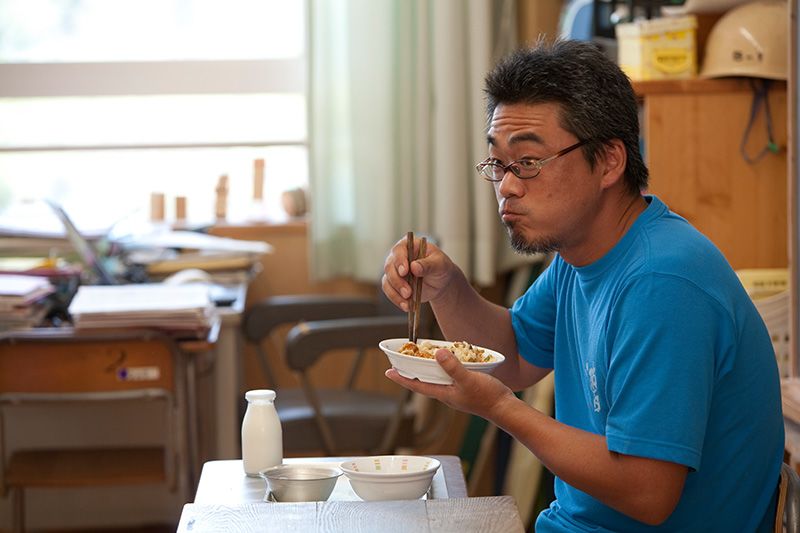
Fifth-grade teacher Ichinose Hideomi makes a point of encouraging his students to eat every last bite of their lunches.
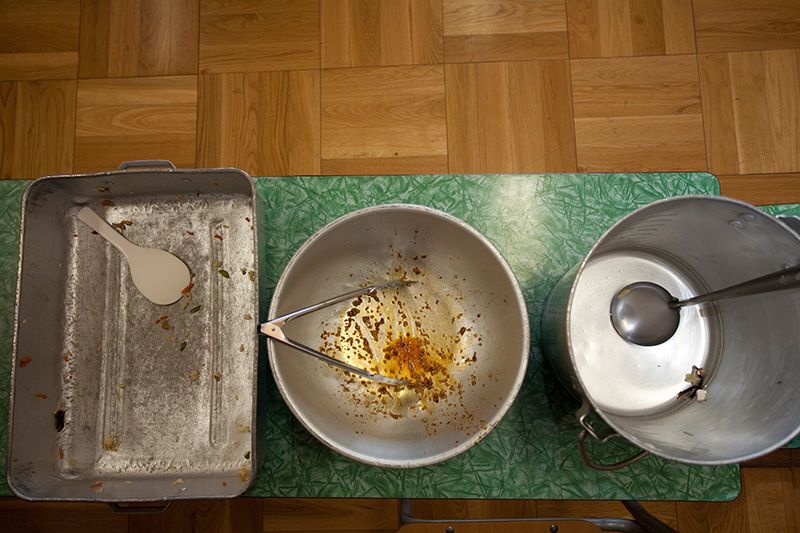
The fifth-grade students have once again polished off everything on the menu.
I end up in the fifth-grade class of Ichinose Hideomi, an athletic-looking teacher whose hearty appetite seems to have worn off on his students. While his class finishes dishing out everything, Ichinose tells me that he emphasizes the importance of not wasting any of the food served at lunch. He also makes a point of encouraging proper table manners, which in Japan includes not only keeping your elbows off the table and sitting up straight, but also holding your chopsticks properly and taking a bite of each dish in rotation rather than polishing off one dish at a time.
After the food is served, I notice that some students are staking their claim to some of the leftovers. They play a quick round of janken (rock-paper-scissors) to decide who gets what. I am sorely tempted, now that my breakfast is but a distant memory, to run over and join their competition.
Instead, I ask Ichinose how he makes sure that his students don’t waste any food. He says, half-jokingly, that he took the initiative by eating a lot himself. Gradually the kids responded to his challenge, leading to the heated janken battles for the leftovers I was witnessing. He is proud that his students have built up a record of no wasted food that stretches back for several months.
At this point, my stomach irritably intervenes to ask me why it hasn’t been fed, so I let the teacher enjoy his lunch and head back down to the principal’s office.
I open the office door and am relieved to see a school lunch has been placed on the table for me. And it is well worth the wait! The meals might be created with the students in mind, but they taste very good to this adult. The tuna is lovely, the vegetables a crunchy delight, and the soup really hits the spot.
As I leave to head home after lunch my only regret is that I won’t be able to stop by again later in the week to sample the curry with summer vegetables which is on the menu. Too bad they don’t deliver.
(Originally written in English. Photographs by Katō Takemi.)
